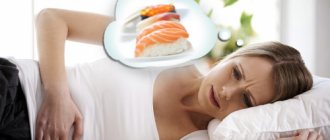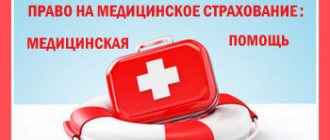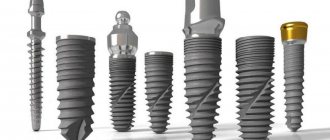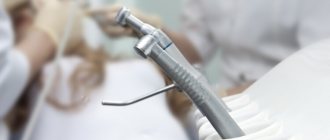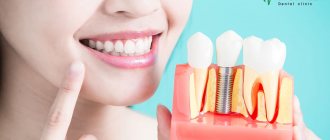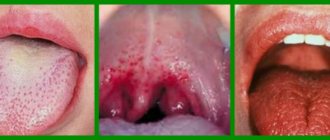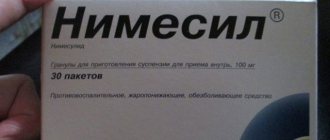When aching pain in a tooth appears, a person is simply unable to think about anything else, because this is one of the most unpleasant sensations. Moreover, it often happens that the pain begins at night or at times when dental care is not available (at the dacha, on a trip, etc.), and it is not possible to immediately see a doctor for treatment. Why does pain occur, and how to soothe an aching tooth before visiting the dentist?
What causes aching pain in a tooth?
The main causes of pain are:
- Infectious lesions of dental units: caries, pulpitis, periodontitis. Even in the later stages, these diseases may not give a clearly defined clinical picture and may only manifest as persistent aching pain inside the tooth when exposed to any irritant.
- Too thin enamel layer, cracks and chips in the enamel.
- Periodontitis. In some cases, gum inflammation is accompanied by throbbing toothache.
- Treatment or tooth extraction. Aching pain often appears after the removal of a wisdom tooth or any other tooth - this is a normal reaction to the operation, and usually the painful sensations gradually go away on their own after a few days. Also, aching pain in the tooth often occurs after removal of the nerve - this is a common reaction of the body to treatment and does not require special therapy.
Nurofen
Nurofen (active ingredient - ibuprofen) is one of the most prominent representatives of non-steroidal anti-inflammatory drugs (NSAIDs), without which it is difficult to imagine the home medicine cabinet of the average person. And there are good reasons for this: drugs of this class, including, naturally, Nurofen, have pronounced anti-inflammatory, analgesic and antipyretic properties, which have been and will be in demand at all times. A key characteristic of Nurofen that helps it realize its pharmacological potential is the ability to inhibit the synthesis of prostaglandins (mediators of inflammation, pain and hyperthermic manifestations). Under the influence of Nurofen, the permeability of blood vessels is reduced, microcirculation is stimulated, and the energy-consuming inflammatory process is deprived of biochemical “feeding”. Nurofen realizes its analgesic effect through suppressing the activity of another insidious mediator that generates pain and inflammation - bradykinin. Having a diverse effect on all phases of the inflammatory reaction, incl. based on its exudative and proliferative components, Nurofen is a fast and effective analgesic that relieves swelling and makes people with problem joints forget about morning stiffness.
The antipyretic effect of Nurofen is associated with its effect on the thermoregulatory centers of the diencephalon.
Nurofen is available in the form of tablets and gel for external use. Tablets should be taken after meals 3-4 times a day, 200 mg at a time. To approximate the therapeutic effect, a twofold increase in the single dose is allowed when taking the drug 3 times a day. This is the maximum daily dose, beyond which it is not recommended. The time interval between taking the drug should not be less than 6 hours. Children 6-12 years old take no more than 1 tablet three times a day. If after 2-3 days the signs of the disease have not disappeared, you must see a doctor.
Nurofen gel is used as follows: 4-10 cm of the drug is squeezed onto the palm and carefully rubbed into the skin until completely absorbed, after which the hands are washed thoroughly. The gel should not be applied to injured areas of the skin. The frequency of this procedure is every 4 hours, but no more than 4 times a day. If after 2 weeks of using Nurofen gel it is not possible to achieve the expected effect, you should consult a doctor.
How to soothe an aching tooth?
If aching pain inside a tooth or after the removal of a wisdom tooth prevents you from sleeping peacefully or generally thinking about anything else, you need to take care to reduce it to a minimum. And at the first opportunity, be sure to consult a dentist, because pain relief does not mean that the problem has been eliminated, and there is no need for treatment. You can eliminate pain as follows:
- First of all, thoroughly brush your teeth and remove any remaining food from the interdental spaces.
- Rinse your mouth with a soda-salt solution (a teaspoon of soda and salt per glass of warm boiled water). You can use only saline solution or just warm water if nothing else is available.
- Take a pain reliever (analgin, paracetamol, ibuprofen) if possible.
- If there are no medications at hand, you can relieve pain with folk remedies. Rinsing with decoctions of chamomile, calendula, sage, and calamus root helps to cope well with toothache. You can also use tampons soaked in clove, sea buckthorn or mint oil, which should be applied to the affected area. Rinsing with alcohol-containing liquids - propolis tincture, regular vodka or cognac (sweetened alcohol-containing drinks cannot be used for this purpose!) can help get rid of pain.
It is strictly not recommended to use warming procedures in this case - rinsing should be at approximately room temperature, warm compresses and heating pads should not be applied to the sore area. Heat only accelerates and intensifies the inflammatory process, which can provoke the rapid development of a purulent abscess and the spread of inflammation to nearby tissues.
NUROFEN oral suspension (strawberry), 100mg/5ml 100ml bottle
The simultaneous use of ibuprofen with the following drugs should be avoided: · Acetylsalicylic acid: with the exception of low doses of acetylsalicylic acid (not more than 75 m by a doctor, since combined use may increase the risk of side effects. With simultaneous use, ibuprofen reduces the anti-inflammatory and antiplatelet effect of acetylsalicylic acid (possibly increased incidence of acute coronary insufficiency in patients receiving small doses of acetylsalicylic acid as an antiplatelet agent after starting ibuprofen).Other NSAIDs, including selective COX-2 inhibitors: the simultaneous use of two or more drugs from the group of NSAIDs should be avoided -due to a possible increase in the risk of side effects.Use with caution simultaneously with the following drugs: · Anticoagulants and thrombolytic drugs: NSAIDs may enhance the effect of anticoagulants, in particular warfarin and thrombolytic drugs. · Antihypertensives (ACE inhibitors and angiotensin II antagonists) and diuretics: NSAIDs may reduce the effectiveness of drugs in these groups. Diuretics and ACE inhibitors may increase the nephrotoxicity of NSAIDs. · Glucocorticosteroids: increased risk of gastrointestinal ulceration and gastrointestinal bleeding. · Antiplatelet agents and selective serotonin reuptake inhibitors: increased risk of gastrointestinal bleeding. · Cardiac glycosides: simultaneous administration of NSAIDs and cardiac glycosides can lead to worsening heart failure, a decrease in glomerular filtration rate and an increase in the concentration of cardiac glycosides in the blood plasma. · Lithium preparations: there is evidence of the likelihood of an increase in the concentration of lithium in the blood plasma during the use of NSAIDs. · Methotrexate: there is evidence of the likelihood of an increase in the concentration of methotrexate in the blood plasma during the use of NSAIDs. · Cyclosporine: increased risk of nephrotoxicity with simultaneous administration of NSAIDs and cyclosporine. · Mifepristone: NSAIDs should be started no earlier than 8-12 days after taking mifepristone, as NSAIDs may reduce the effectiveness of mifepristone. · Tacrolimus: When NSAIDs and tacrolimus are co-administered, the risk of nephrotoxicity may increase. · Zidovudine: Concomitant use of NSAIDs and zidovudine may lead to increased hematotoxicity. There is evidence of an increased risk of hemarthrosis and hematomas in HIV-positive patients with hemophilia who received concomitant treatment with zidovudine and ibuprofen. · Quinolone antibiotics: In patients receiving concomitant treatment with NSAIDs and quinolone antibiotics, the risk of seizures may be increased.
Note!
The description of the drug Nurofen on this page is a simplified author’s version of the apteka911 website, created on the basis of the instructions for use.
Before purchasing or using the drug, you should consult your doctor and read the manufacturer's original instructions (attached to each package of the drug). Information about the drug is provided for informational purposes only and should not be used as a guide to self-medication. Only a doctor can decide to prescribe the drug, as well as determine the dose and methods of its use.
Release forms
- Nurofen tablets 200 mg No. 6, No. 12, No. 24.
- Nurofen children's TB 200 mg from 6 years No. 8, from 12 years No. 12
- Nurofen Forte TB 400 mg No. 12.
- Nurofen Express Forte capsules 400 mg No. 10, No. 20.
- Nurofen Express Ultracap 200 mg capsules No. 10.
- Nurofen Intensive TB No. 6.
- Nurofen Cold Flu TB No. 12.
- Nurofen for children rect suppositories No. 10
- Nurofen for children suspension 100ml (strawberry, orange)
- Nurofen Forte for children suspension 100ml (orange, strawberry)
Nurofen for children oral suspension orange 100 mg/5 ml 200 ml bottle 1 pc. in Moscow
Nurofen® for children is a suspension specially designed for children. For oral administration. Patients with hypersensitivity of the stomach are recommended to take the drug with meals.
For short term use only. Read the instructions carefully before taking the drug.
Shake the bottle thoroughly before use. To accurately measure the dose of the drug, a convenient measuring syringe is included. 5 ml of the drug contain 100 mg of ibuprofen or 20 mg of ibuprofen in 1 ml.
Using a measuring syringe:
Insert the measuring syringe firmly into the neck of the bottle. Turn the bottle upside down and gently pull the plunger down, drawing the suspension into the syringe to the desired level. Return the bottle to its original position and remove the syringe, gently turning it. Place the syringe in the mouth and slowly press the plunger, smoothly releasing the suspension.
After use, rinse the syringe in warm water and dry it out of the reach of the child.
Fever (heat) and pain:
The dosage for children depends on the age and body weight of the child. The maximum daily dose should not exceed 30 mg/kg of the child’s body weight with intervals between doses of the drug of 6-8 hours.
Children aged 3-6 months (child weight from 5 to 7.6 kg): 2.5 ml (50 mg) up to 3 times within 24 hours, no more than 7.5 ml (150 mg) per day.
Children aged 6-12 months (child weight 7.7 - 9 kg): 2.5 ml (50 mg) up to 3-4 times within 24 hours, no more than 10 ml (200 mg) per day.
Children aged 1-3 years (child weight 10 - 16 kg): 5.0 ml (100 mg) up to 3 times within 24 hours, no more than 15 ml (300 mg) per day.
Children aged 4-6 years (child weight 17 - 20 kg): 7.5 ml (150 mg) up to 3 times within 24 hours, no more than 22.5 ml (450 mg) per day.
Children aged 7-9 years (child weight 21 - 30 kg): 10 ml (200 mg) up to 3 times within 24 hours, no more than 30 ml (600 mg) per day.
Children aged 10-12 years (child weight 31 - 40 kg): 15 ml (300 mg) up to 3 times within 24 hours, no more than 45 ml (900 mg) per day.
The duration of treatment is no more than 3 days. Do not exceed the indicated dose.
If symptoms persist or worsen after taking the drug within 24 hours (in children aged 3-5 months) or within 3 days (in children aged 6 months and older), you should stop treatment and consult a doctor.
Post-immunization fever: Children under 6 months of age: 2.5 ml (50 mg) of the drug. If necessary, another 2.5 ml (50 mg) after 6 hours. Do not use more than 5 ml (100 mg) in 24 hours.
Nurofen forte, 400 mg, film-coated tablets, 12 pcs.
The simultaneous use of ibuprofen with the following drugs should be avoided
Acetylsalicylic acid:
with the exception of low doses of acetylsalicylic acid (no more than 75 mg/day) prescribed by a doctor, since combined use may increase the risk of side effects. With simultaneous use, ibuprofen reduces the anti-inflammatory and antiplatelet effect of acetylsalicylic acid (an increase in the incidence of acute coronary insufficiency in patients receiving small doses of acetylsalicylic acid as an antiplatelet agent is possible after starting ibuprofen).
Other NSAIDs, in particular selective COX-2 inhibitors:
The simultaneous use of two or more drugs from the NSAID group should be avoided due to a possible increased risk of side effects.
Use with caution simultaneously with the following drugs
Anticoagulants and thrombolytic drugs:
NSAIDs may enhance the effect of anticoagulants, in particular warfarin and thrombolytic drugs.
>Antihypertensive drugs (ACE inhibitors and ARB II) and diuretics: NSAIDs may reduce the effectiveness of drugs in these groups. In some patients with impaired renal function (for example, dehydrated patients or elderly patients with impaired renal function), co-administration of ACE inhibitors or ARB II and agents that inhibit COX may lead to a deterioration in renal function, including the development of acute renal failure (usually reversible). ).
These interactions should be considered in patients taking coxibs concomitantly with ACE inhibitors or ARB II. In this regard, the combined use of the above drugs should be prescribed with caution, especially in elderly people. Patients should be prevented from dehydration and consideration should be given to monitoring renal function upon initiation of this combination treatment and periodically thereafter.
Diuretics and ACE inhibitors:
may increase the nephrotoxicity of NSAIDs.
GKS:
increased risk of gastrointestinal ulcers and gastrointestinal bleeding.
Antiplatelet agents and SSRIs:
increased risk of gastrointestinal bleeding.
Cardiac glycosides:
simultaneous administration of NSAIDs and cardiac glycosides can lead to worsening heart failure, a decrease in GFR and an increase in the concentration of cardiac glycosides in the blood plasma.
Lithium preparations:
There is evidence of the likelihood of an increase in the concentration of lithium in the blood plasma during the use of NSAIDs.
Methotrexate:
There is evidence of the likelihood of an increase in the concentration of methotrexate in the blood plasma during the use of NSAIDs.
Cyclosporine:
increased risk of nephrotoxicity with simultaneous administration of NSAIDs and cyclosporine.
Mifepristone:
NSAIDs should be started no earlier than 8–12 days after taking mifepristone, as NSAIDs may reduce the effectiveness of mifepristone.
Tacrolimus:
with simultaneous administration of NSAIDs and tacrolimus, the risk of nephrotoxicity may increase.
Zidovudine:
simultaneous use of NSAIDs and zidovudine may lead to increased hematotoxicity. There is evidence of an increased risk of hemarthrosis and hematomas in HIV-positive patients with hemophilia who received concomitant treatment with zidovudine and ibuprofen.
Quinolone antibiotics:
in patients receiving concomitant treatment with NSAIDs and quinolone antibiotics, the risk of seizures may increase.
Myelotoxic drugs:
increased hematotoxicity.
Cefamandole, cefoperazone, cefotetan, valproic acid, plicamycin:
increased incidence of hypoprothrombinemia.
Drugs that block tubular secretion:
decreased excretion and increased plasma concentrations of ibuprofen.
Inducers of microsomal oxidation (phenytoin, ethanol, barbiturates, rifampicin, phenylbutazone, tricyclic antidepressants):
increased production of hydroxylated active metabolites, increased risk of developing severe intoxications.
Microsomal oxidation inhibitors:
reducing the risk of hepatotoxicity.
Oral hypoglycemic drugs and insulin, sulfonylurea derivatives:
enhancing the effect of drugs.
Antacids and colestyramics:
decreased absorption.
Uricosuric drugs:
decreased effectiveness of drugs.
Caffeine:
enhancing the analgesic effect.
Helping children with acute toothache
It's impossible to predict
Vacations outside the city, weekends and holidays can be ruined by toothache. For some reason, it always starts at the very moment when there is no way to see a doctor.
To prevent such a nuisance from turning fun weekends and days of horror, you need to regularly visit the pediatric dentist. An experienced doctor will conduct a thorough examination of the entire oral cavity and tell you about any existing problems. If necessary, he will prescribe treatment and preventive procedures. Although this will not give a one hundred percent guarantee that your teeth will not start to hurt in a month, there will be more chances to spend a relaxing vacation away from the dentist’s office. It is advisable to carry out such inspections before leaving for the sea, abroad, to a village or to a children's camp. Finding a dental clinic in such places is problematic. In addition, the dentist will always be able to give advice on what to do if a sharp toothache takes you by surprise.
What hurts the most?
For children, the most unpleasant pain is the pain that occurs during exacerbation of chronic diseases: pulpitis and periodontitis.
Pulpitis
This disease can be suspected by aching pain. As a rule, they begin at night or in the evening. All unpleasant sensations may completely disappear by the morning and reappear in the evening. Pulpitis can also manifest itself in the form of prolonged pain, which intensifies while chewing food. If you examine children's teeth yourself, it is very difficult to determine the disease. Sometimes it is not possible to find anything other than a small “hole”.
When the aching pain lasts for several hours, it begins to “spread” to the neighboring teeth. After a while, it is difficult even for an adult to tell which tooth hurts. And it is even more problematic for a child to point out the source of pain. This complicates the diagnosis of the disease, since it is difficult to determine where to look.
Suspected pulpitis - see a doctor immediately
Pulp is the soft tissue inside the tooth. They are rich in nerve endings and blood vessels. With pulpitis, this bundle begins to become inflamed. At first there may be no pain at all. But over time, the disease begins to manifest itself. If you do not consult a dentist, complications may arise. Inflammation (periodontitis, abscess) gradually spreads to healthy tissues that are located around the diseased tooth. It is very painful and dangerous. Therefore, you cannot do without the help of a specialist.
The doctor will remove all affected areas of the tooth, apply a special medicine to the area of inflammation, and then restore the tooth to its original shape with filling material. If too much hard tissue is removed during treatment, a crown will be placed. All these procedures do not occur in one day. We must prepare for long-term treatment, which can last up to a month.
But! You can save a tooth only if you consult a doctor in time.
What to do before being examined by a doctor?
First of all, the child needs to relieve the pain. Any painkillers approved for children are suitable for this. When a child grows up in the house, as a rule, they are always in the first aid kit (Nurofen, Panadol, etc.). In such cases, it is not worth experimenting with drugs; it is best to give the baby a proven medicine that has helped him before. The doctor will do the rest. It is very important not to put off visiting the dentist, even if the pain completely disappears. An anesthetic cannot cure a diseased tooth, it only eliminates the symptoms of the disease.
Important! You cannot treat a bad tooth yourself, for example, pour crushed aspirin into the “hole”. This will only make the situation worse.
The disease does not go away on its own - there are no miracles
There are situations when a visit to the dentist is impossible for several days, and sometimes even a week. After such a long period, the pain may subside or go away completely. But this does not mean that the disease has passed. The period of exacerbation simply ended, and pulpitis became chronic. The pus could have passed away unnoticed through a hole in the gum, which parents often call a “pimple.” But the infection has not gone away from the body. The inflammation still continues, the child just doesn’t feel it. The infection can penetrate into the molar that is about to grow in this place, or spread throughout the body.
Exacerbation of pulpitis usually begins during a decrease in immunity. The pain occurs simultaneously with a cold or hypothermia.
At this moment, the number of unpleasant symptoms increases:
- The tooth hurts constantly. The pain intensifies while eating.
- The gums around the tooth become red and swollen.
- A fistula tract is formed. The body tries to remove pus through it.
- The tooth begins to loosen.
- The temperature rises, and the face on the side of the diseased tooth may swell.
When the situation has progressed to such signs, there is practically no chance of saving the tooth. And removing a tooth with severe inflammation is very painful. The anesthesia is not always fully effective and the entire process is very sensitive.
How to help your child at home
First of all, it is pain relief. You can give any medicine in the dose allowed for the child’s age. Nurofen, Panadol and other drugs are suitable. To relieve swelling at the site of inflammation, you can make a mouth bath. To do this, add a teaspoon of baking soda and salt to a glass of warm water. The solution should be taken into the mouth and held for one minute. You can do this bath up to five times during the day.
Carefully! Wrapping the area of inflammation in warm clothes is strictly prohibited. As the temperature rises, the rate of the inflammatory process increases. Because of this, the infection begins to spread to healthy tissue even faster. And the lesion becomes larger every minute.
Remember, first aid for toothache does not apply to medical procedures! It only eliminates the pain and makes the situation easier. The cause of pain can only be detected and treated by a specialist. Therefore, it is imperative to show your child to the dentist. He will make a diagnosis and carry out complete treatment.

